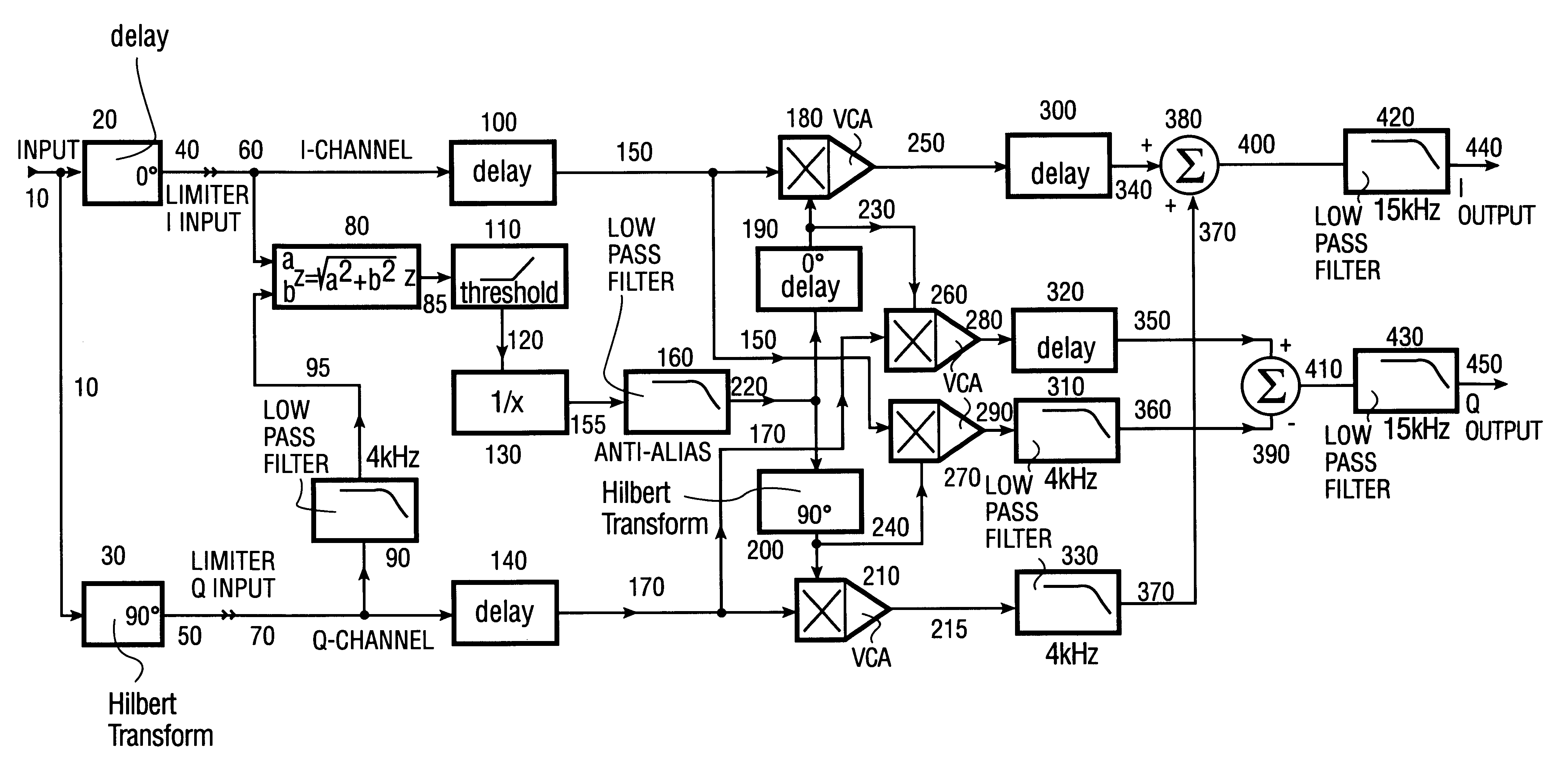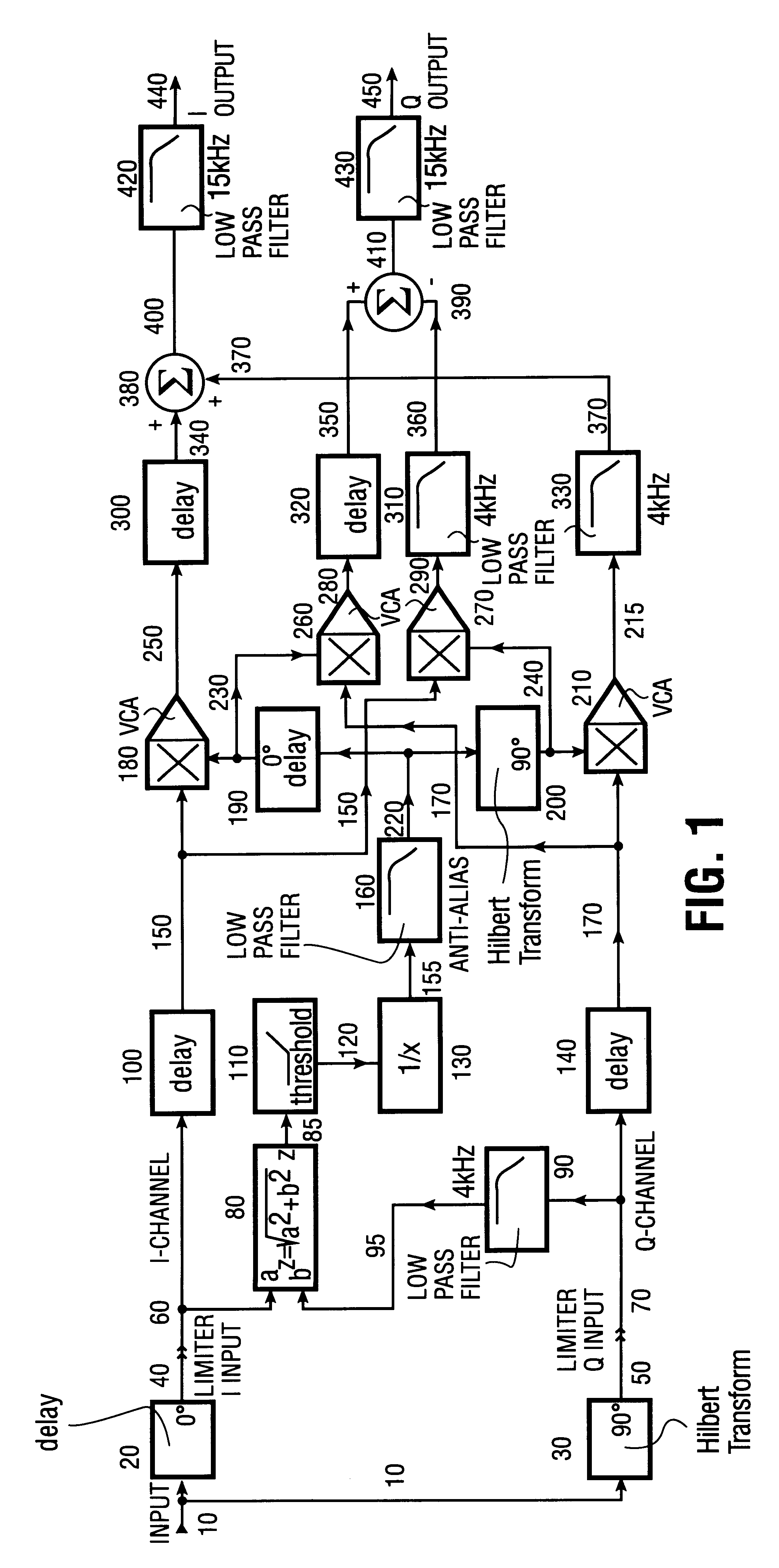Lower sideband modulation distortion cancellation
- Summary
- Abstract
- Description
- Claims
- Application Information
AI Technical Summary
Benefits of technology
Problems solved by technology
Method used
Image
Examples
first embodiment
The first embodiment is the more economical system because it requires very little extra arithmetic computations. However, it is not frequency selective so it can increase distortion at low frequencies where no overshoot control is needed.
second embodiment
The second embodiment is more expensive than the first embodiment because it requires two filters. However, unlike the first embodiment, it does not increase distortion at low frequencies because the filter provides extra gain only where needed to control overshoot.
By changing the sign of the summation of the multiplier that processes the Hilbert transform of the input signal a system that produces only the lower sideband of the modulation distortion can be produced. While much more audible than the upper sideband, it is useful to use this to prevent the system from producing out-of-band spectral components.
first embodiment (system of fig.1)
FIRST EMBODIMENT (SYSTEM OF FIG. 1)
Referring to FIG. 1, the input signal on line 10 is applied to Hilbert transformer 30 and delay 20. All physical Hilbert transformers have time delay, the time delay in delay 20 is equal to the time delay in Hilbert transformer 30 plus the time delay in lowpass filter 90.
Almost any Hilbert transformer realization can be used for transformer 30. (U.S. Pat. No. 4,495,643 discusses this in more detail.) However, the higher audio quality is achieved by a linear-phase realization because this allows delay 20 to preserve the shape of the waveform on line 10. Such a realization is generally only practical in the sample-data domain and can be achieved by an antisymmetrical Finite Impulse Response (FIR) digital filter. The Parks, McClellan, and Rabiner algorithm can compute the tap weights for such a filter. (Program EQFIR in PARKSMC.F, Oct. 27, 1997, pp. 1-12.) Such filters have a bandpass characteristic, and a bandwidth wide enough for high-quality audio ...
PUM
 Login to View More
Login to View More Abstract
Description
Claims
Application Information
 Login to View More
Login to View More - R&D
- Intellectual Property
- Life Sciences
- Materials
- Tech Scout
- Unparalleled Data Quality
- Higher Quality Content
- 60% Fewer Hallucinations
Browse by: Latest US Patents, China's latest patents, Technical Efficacy Thesaurus, Application Domain, Technology Topic, Popular Technical Reports.
© 2025 PatSnap. All rights reserved.Legal|Privacy policy|Modern Slavery Act Transparency Statement|Sitemap|About US| Contact US: help@patsnap.com



